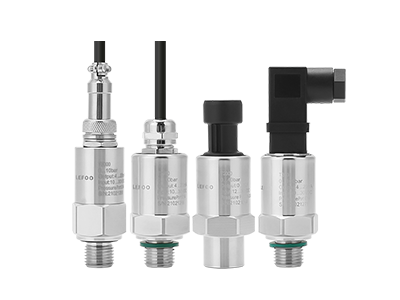A pressure transmitter is a device that converts pressure into a pneumatic signal or an electric signal for control and remote transmission. It can convert the physical pressure parameters such as gas and liquid felt by the load cell sensor into a standard electrical signal (such as 4~20mADC, etc.), which can be used to supply secondary instruments such as indicating alarms, recorders, regulators, etc. for pressure transmitter manufacturer measurement, indication, and process regulation.
The electrical components of pressure transmitters that sense pressure are generally resistance strain gauges, which are sensitive devices that convert the pressure on the measured piece into an electrical signal.
The most widely used strain gauges are metal resistance strain gauges and semiconductor strain gauges. There are two types of metal resistance strain gauges: filamentary strain gauges and metal foil strain gauges.
Usually, the strain gauge is tightly bonded to the substrate that produces mechanical strain through a special adhesive. When the substrate is stressed and the stress changes, the resistance strain gauge also deforms together, so that the resistance value of the strain gauge changes, so that The voltage applied across the resistor changes.
Pressure transmitter is the most commonly used sensor in industrial practice. It is widely used in various industrial automatic control environments, involving water conservancy and hydropower, railway transportation, intelligent buildings, production automatic control, aerospace, military industry, petrochemical, oil wells, electric power, and ships. , machine tools, pipelines and many other industries.
There are two types of pressure transmitters: electric and pneumatic. The uniform output signal of the electric type is a direct current signal such as 0-10mA, 4-20mA or 1-5V. The unified output signal of the pneumatic type is the gas pressure of 20-100Pa.
Pressure transmitters can be divided into force (torque) balance type, capacitive type, inductive type, strain type and frequency type according to different conversion principles. The following briefly introduces the principles, structures, use, maintenance and calibration knowledge. Lefoo mainly manufactures hvac differential pressure sensor and refrigeration pressure sensor
The main function of the pressure transmitter is to transmit the pressure signal to the electronic device, and then display the pressure on the computer. The principle is roughly: convert the mechanical signal of the pressure such as water pressure into an electronic signal such as current (4-20mA) pressure and voltage or the magnitude of the current has a linear relationship, generally a proportional relationship.
Therefore, the voltage or current output by the transmitter increases with the increase of pressure, and thus a relationship between pressure and voltage or current is obtained. The two pressures of the measured medium of the pressure transmitter are passed into the high and low pressure chambers. The pressure of the low-pressure chamber adopts atmospheric pressure or vacuum, which acts on the isolation diaphragms on both sides of the δ element (ie, the sensitive element), and is transmitted to both sides of the measuring diaphragm through the isolation sheet and the filling liquid in the element.
The pressure transmitter is composed of a measuring diaphragm and electrodes on both sides of the insulating sheet to form a capacitor. When the pressure on both sides is not consistent, the measuring diaphragm will be displaced, and the displacement is proportional to the pressure difference, so the capacitance on both sides is not equal, through the oscillation and demodulation link.
Differential Pressure Sensor VS Differential Pressure Transmitter
More Related Products

 English
English  français
français  Deutsch
Deutsch  Español
Español  italiano
italiano  русский
русский  português
português  العربية
العربية  Türkçe
Türkçe  Zulu
Zulu 